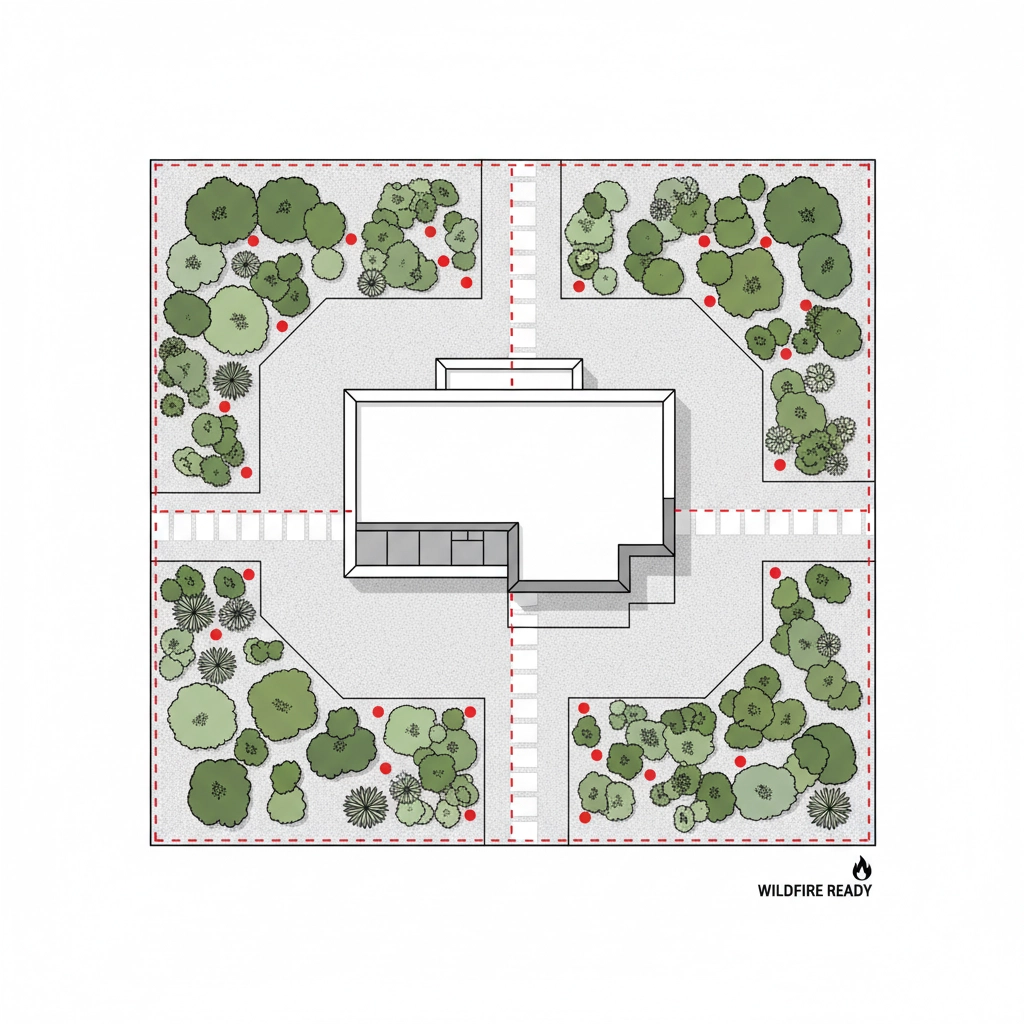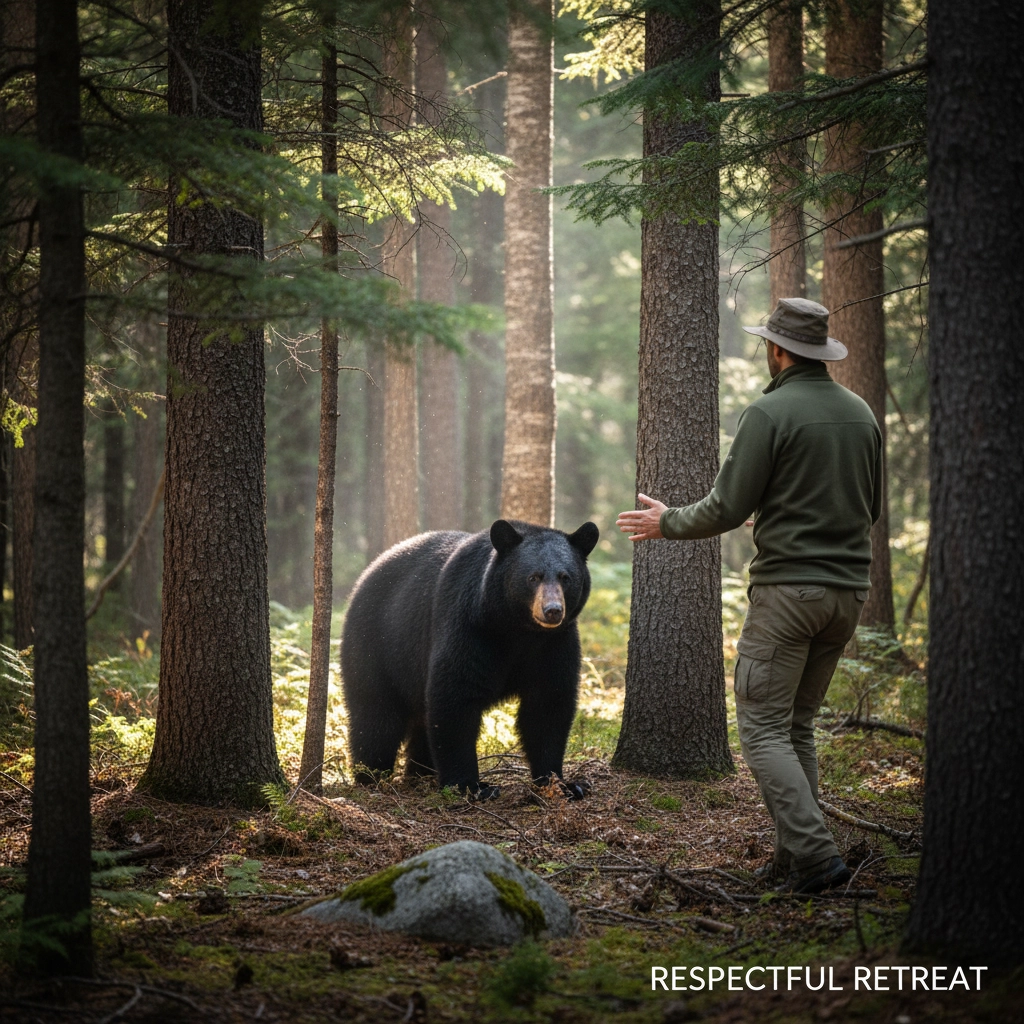Tips for Avoiding Human-Wildlife Conflict in Haliburton County
- Targeted Wildlife and Pest Solutions

- Sep 26
- 5 min read
Living in Haliburton County means sharing your space with some incredible wildlife: black bears, raccoons, porcupines, skunks, and various bird species call this region home. While it's amazing to have such biodiversity in your backyard, it can sometimes lead to conflicts when wildlife and humans cross paths. The good news? Most conflicts are completely preventable with the right approach.
Whether you're a year-round resident, cottage owner, or business operator, understanding how to coexist peacefully with wildlife protects both you and the animals. Let's dive into practical strategies that work in our unique Haliburton County environment.
Know Your Neighbors: Common Wildlife in Haliburton County
Before you can prevent conflicts, you need to understand what animals you might encounter. Black bears are probably the most concerning for many residents, especially during berry season and before hibernation. Raccoons are incredibly adaptable and smart, making them frequent visitors to properties with accessible food sources.
You'll also encounter porcupines (particularly problematic for dog owners), skunks, various bird species, and occasional visits from deer, moose, and even the rare wolf or coyote. Each animal has different motivations for visiting your property, but most boil down to three things: food, water, and shelter.

Make Your Property Less Attractive to Wildlife
Your landscaping choices significantly impact which animals visit your property. Start by creating a buffer zone around your home: keep at least three feet of open space between vegetation and your house. This simple step removes cover that animals use to approach undetected.
Vegetation Management:
Trim tree branches away from your roof and siding
Keep shrubs and bushes well-spaced, not touching each other
Remove brush piles and dense groundcover near your home
Choose native plants over exotic species that might create unexpected food sources
Storage and Maintenance:
Store firewood at least 35 feet from your house and raise it off the ground
Clean up fallen fruit from trees regularly
Remove water sources like leaky outdoor faucets or standing water in containers
Keep your property well-maintained: overgrown areas attract wildlife
The goal isn't to create a barren landscape, but rather to design your property so wildlife feels exposed and uncomfortable when approaching your home.
Secure All Food Sources
This is where most conflicts begin. Animals have excellent memories and will return to reliable food sources repeatedly. Never intentionally feed wildlife: this includes leaving food out for feral cats, which attracts numerous other species.
Garbage and Compost:
Use tight-fitting lids on all garbage containers
Store garbage in a secure building until pickup day when possible
If you compost, use a fully enclosed system and avoid adding meat, dairy, or cooked foods
Clean containers regularly to remove odors
Pet Food and Bird Feeding:
Feed pets indoors or remove bowls immediately after feeding
If you maintain bird feeders, place them at least 35 feet from your home
Use specific bird seed rather than mixed blends that attract various wildlife
Consider suspending bird feeding during active wildlife seasons (spring through fall)
Outdoor Cooking and Dining:
Clean BBQ grills thoroughly after each use
Don't leave food or drinks outside overnight
Clean up completely after outdoor meals or parties

Responding Safely to Wildlife Encounters
Even with the best prevention strategies, you'll likely encounter wildlife at some point. Your response can determine whether it becomes a dangerous situation or simply a memorable wildlife sighting.
General Guidelines:
Never approach or attempt to feed any wild animal
Keep a safe distance: at least 100 meters from large animals like bears or moose
Never corner an animal or block its escape route
Back away slowly while facing the animal; don't run unless specifically recommended for that species
Black Bear Encounters:
Make noise when walking in areas with limited visibility
If you see a bear, don't run: back away slowly while making yourself appear large
Speak in a calm, loud voice
If a bear approaches, use bear spray if you have it
Fight back only if the bear makes contact
Small Animal Encounters:
Raccoons, skunks, and porcupines are generally more afraid of you than you are of them
Give them space to leave the area
Never attempt to remove animals yourself, especially if they appear sick or are protecting young
Seasonal Considerations for Haliburton County
Wildlife behavior changes dramatically with the seasons, and your prevention strategies should adapt accordingly.
Spring (April-June):
Animals are emerging from winter with depleted energy stores
Many species have young, making mothers more protective and desperate for food
Increase vigilance around garbage and pet food
Check and repair any winter damage to your property that might create new access points
Summer (July-September):
Peak activity period for most wildlife
Natural food sources are abundant, but human food sources remain attractive
Cottage season brings increased human activity and potential conflicts
Be especially careful with outdoor dining and garbage management
Fall (October-November):
Animals are preparing for winter and actively seeking high-calorie foods
Bears are in hyperphagia (excessive eating phase) before hibernation
This is the highest-risk season for bear encounters
Remove all outdoor food sources and be extra vigilant
Winter (December-March):
Most conflicts involve small mammals seeking shelter
Check for entry points into buildings and seal them
Be aware that unseasonably warm weather can wake hibernating bears

When to Call Professional Wildlife Control
Some situations require professional intervention. Don't attempt to handle these scenarios yourself:
Immediate Professional Help Needed:
Animals that appear sick, injured, or behaving abnormally
Wildlife that has established residence in your home, attic, or other structures
Aggressive animals that don't respond to deterrents
Large animals (bears, moose) that seem comfortable around humans
Any situation where you feel unsafe
Preventive Professional Services:
Annual property assessments to identify wildlife attractants
Structural modifications to prevent wildlife entry
Installation of proper deterrent systems
Humane removal of animals that have moved in
At Targeted Wildlife and Pest Solutions, we understand the unique challenges of living with wildlife in Haliburton County. Our team provides both emergency response and preventive services designed to keep you and wildlife safe. We focus on humane, effective solutions that address the root causes of conflicts rather than just treating symptoms.
Building a Wildlife-Aware Community
Individual efforts work best when supported by community-wide awareness. Talk to your neighbors about wildlife prevention strategies and share observations about animal activity in your area. Many conflicts can be prevented through community coordination.
Consider participating in or organizing community education sessions about local wildlife. The more everyone understands about animal behavior and prevention strategies, the fewer conflicts occur throughout the neighborhood.
Report concerning wildlife behavior to local authorities, but remember that seeing wildlife isn't necessarily a problem: it's only when animals lose their natural fear of humans or become aggressive that intervention is needed.
The Bottom Line
Preventing human-wildlife conflicts in Haliburton County comes down to removing temptations, maintaining your property properly, and responding appropriately when encounters occur. Most wildlife simply wants to go about their business without human interaction: by making your property less appealing and knowing how to respond safely, you can ensure these encounters remain positive experiences.
Remember, wildlife was here first, and we're sharing their habitat. With proper precautions and professional support when needed, coexistence is entirely possible. If you're dealing with persistent wildlife issues or want a professional assessment of your property, don't hesitate to reach out to Targeted Wildlife and Pest Solutions. We're here to help you find solutions that work for both you and the wildlife that makes Haliburton County such a special place to live.
Comments